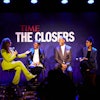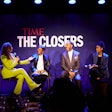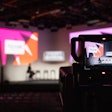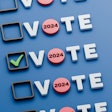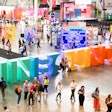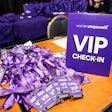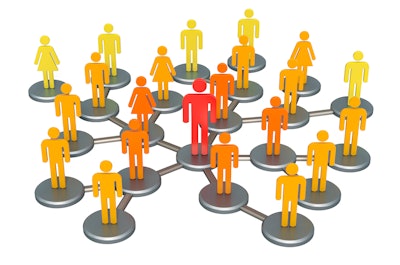
The CDC defines close contact as within six feet or less, for 15 minutes or more with someone who tests positive. Contact tracing is used to trace the people that someone has come in contact with before they learn they have tested positive and were able to quarantine themselves. This allows the people that the sick person came in to contact with to be aware of the situation and make informed choices about their health.
What does that mean for meeting planners and how do you apply contact tracing to your meetings or events? Regardless of the size of your meetings you have to do contact tracing. You will need to know who is at your meeting, not who simply registered, but who was on site. The method you use is up to you. Let’s take a look at a specific example:
You have 200 people at a meeting for two days. After the meeting is over two people contact you and inform you that they tested positive once they got home. If you use only your registration check-in list you need to inform all 200 people that they may have had contact with someone who tested positive. You do not tell them who, only that someone did test positive and they may have had contact.
But what if you only had to inform 23 people that they were in close contact of six feet or less for 15 minutes or more? What would that be worth to your organization in terms of time, public relations and trust maintained by your audience? Is it worth $5 per person, $15 per person? Talk to a planner who has had to deal with informing all attendees they might have had contact and they will tell you it can be a nightmare.
If you want to do more than only use your registration list, here are your options: There are two types of technologies on the market today that work for meetings and that will allow you to have the data to accurately know who had close contact with whom. They are BLE Blue Tooth Technology and mobile phone-based app technology. Let’s look at the differences at a high level.
Blue Tooth is a passive technology and requires attendees to wear a tracking fob, usually attached to the name tag lanyard. The fobs track what other fobs they come into contact with, at what distance and for how long. They are cost-effective at about $10 to $15 per person depending on the size of your meeting. The fobs do not need to be charged and the batteries can last up to a year.
Phone Apps can be a bit more cost-effective but also can be less reliable. They are considered an active technology because they require the user to have the app on their phone, have the app on and have their phone on and with them. They operate in the same way, the app can tell what other phones with the app it has come in contact with, the distance, and for how long. The app options run closer to $5 to $10 per person. The size of your meeting can also impact on the cost.
With both technologies the identity of the person is confidential. You are not really tracking a person and where they are going. You are only tracking the contact with others in the system. How the technologies work is once you know someone tested positive you pull their unique identifier and the system will tell you who was in close contact with the sick person. Then you can email those individuals to inform them they have had contact with someone who tested positive. In most cases, one staff has access to the list of names that are associated with the individual identifiers. All the reports and data are anonymous. It is only after you have an attendee tests positive that you dive into the individual attendee's contact information. It is important to note that in all cases the data will not tell you where a person has been, only if they have had close contact of six feet or less for 15 minutes or more with someone who tested positive. So again, you are not tracking the person… you are tracking the contact.
A one-hour meeting for 50 people is different than a three-day conference for 1,000 people. Every meeting, budget and audience is different and will have different needs. No one option is right for everyone and for some using your check-in list might be enough. There are new vendors coming into the market to provide these technologies. The right technology and vendor is out there to meet your specific needs, you just have to look.
Julie Ann Schmidt, CMP, CMM, C19C0 and is Founder and CEO of Lithium Logistics Group.
For more information check out Schmidt’s COVID Training Sessions https://lilogisticsreg.



